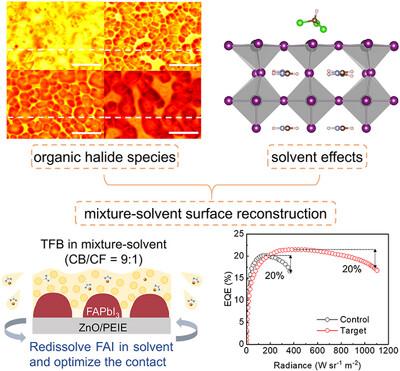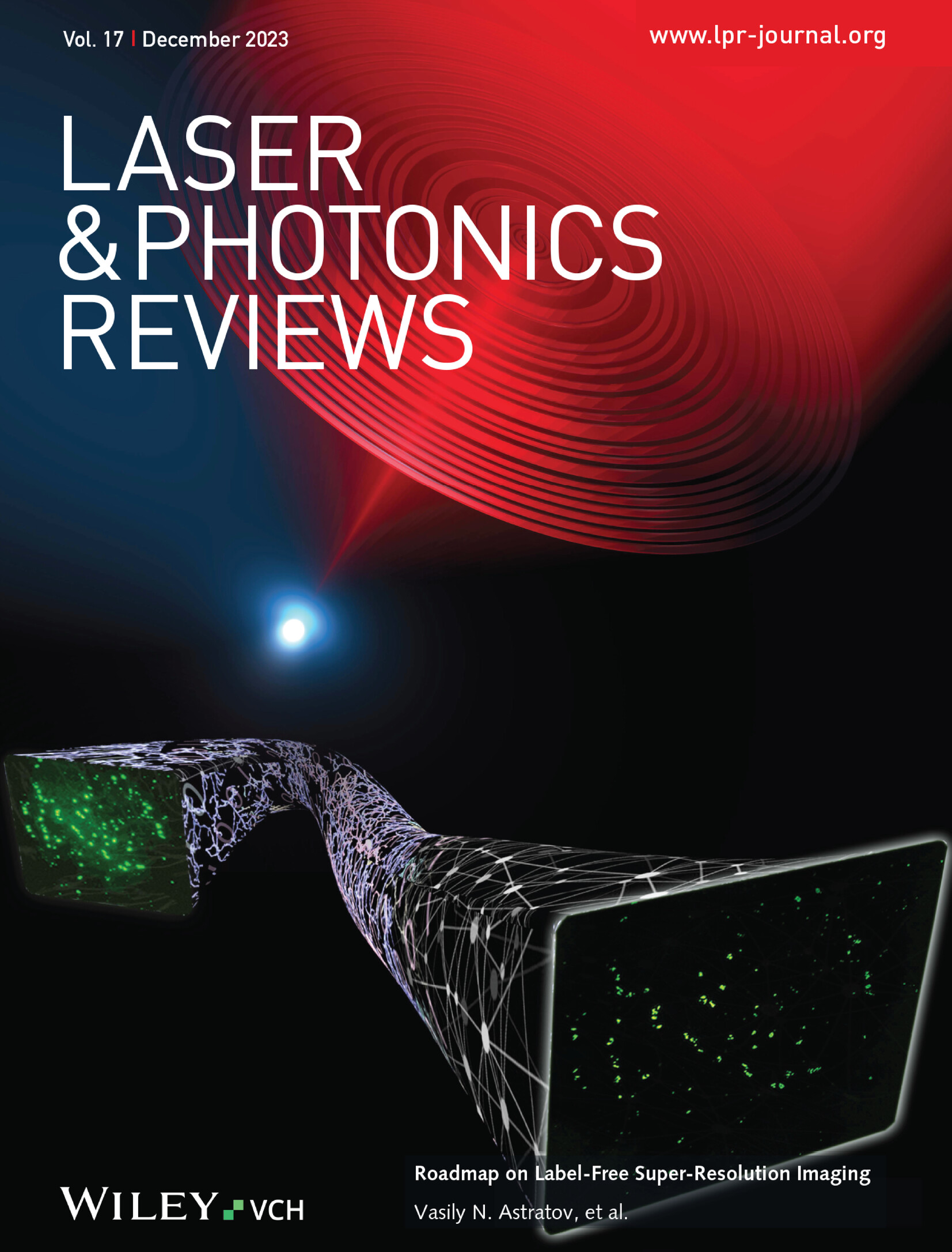Managing Surface Reconstruction Enables Bright, Stable, and Cost-Performance Perovskite Light-Emitting Diodes
IF 9.8
1区 物理与天体物理
Q1 OPTICS
引用次数: 0
Abstract
Organic–inorganic hybrid perovskite is emerging as one of the most promising light source technologies. Various interfacial agents have been widely used on perovskite surfaces, aiming to achieve high brightness and stability in perovskite light-emitting diodes (PeLEDs) by eliminating the adverse effects of excess organic halide residues. However, there are only scattered reports available on the unreacted halide distribution, interfacial solvent effect, and cost-performance for surface engineering, calling for low-cost strategies to address these challenges. Here, the distribution of unreacted halide species is visualized and the effect of solvent-dominated surface reconstruction on performance is pointed. Experimental and computational studies reveal that the surface lattice distortion caused by the interaction between solvents and crystals increases non-radiative losses, thus deteriorating device performance. By managing surface reconstruction using a low-cost mixture-solvent surface reconstruction strategy, cost-effective PeLEDs is obtained with a high radiance of 1103.31 W sr−1 m−2 and an extended lifetime of 84.8 h operated at a current density of 100 mA cm−2, representing the highest brightness for FAPbI3-based PeLEDs.

求助全文
约1分钟内获得全文
求助全文
来源期刊
CiteScore
14.20
自引率
5.50%
发文量
314
审稿时长
2 months
期刊介绍:
Laser & Photonics Reviews is a reputable journal that publishes high-quality Reviews, original Research Articles, and Perspectives in the field of photonics and optics. It covers both theoretical and experimental aspects, including recent groundbreaking research, specific advancements, and innovative applications.
As evidence of its impact and recognition, Laser & Photonics Reviews boasts a remarkable 2022 Impact Factor of 11.0, according to the Journal Citation Reports from Clarivate Analytics (2023). Moreover, it holds impressive rankings in the InCites Journal Citation Reports: in 2021, it was ranked 6th out of 101 in the field of Optics, 15th out of 161 in Applied Physics, and 12th out of 69 in Condensed Matter Physics.
The journal uses the ISSN numbers 1863-8880 for print and 1863-8899 for online publications.

 求助内容:
求助内容: 应助结果提醒方式:
应助结果提醒方式:


